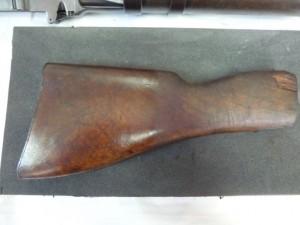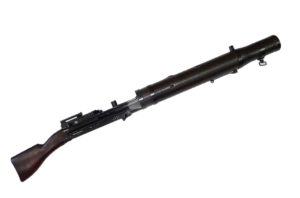03 Oct 2014
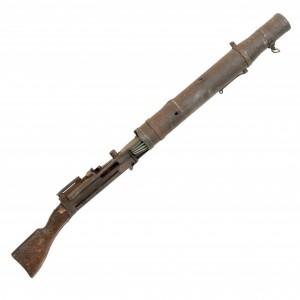
Origins and Use
The Lewis Mark 1 light machine gun was invented in 1911 by Isaac Newton Lewis, based on previous designs by Samuel Maclean. The Birmingham Small Arms Company Limited (BSA) began the manufacture of the Lewis Mark 1 in 1914 due to increased demand during the onset of WW1. The Lewis Mark 1 had a gas operated, automatic action and was recognisable by its distinctive cooling barrel. The design of the gun allowed rapid firing with the rate of fire approximately 500 – 600 rounds per minute. This particular example in the Museum’s collection has a wood pistol grip with a steel barrel and is fitted with blade foresight and aperture rear sight to 2,000 yards. It was presented to Lt Cdr Hilton-Young RNVR of HMS Vindictive by the ship’s company after the Zeebrugge Raid in April 1918 and is inscribed Lewis Gun Of HMS Vindictive 1918.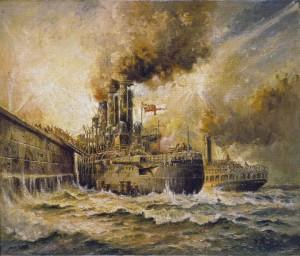
Conservation
This gun had developed a heavy layer of corrosion over its steel surfaces. The stock was loose and parts were missing, such as the trigger and internal bolt action, from the main body of the gun. After careful consideration and discussion with colleagues, I judged it inappropriate to fabricate replacement parts for the gun as this would detract from the gun’s story, but decided that conservation treatment should involve removal of the layers of corrosion to stabilise the condition and allow for better viewer engagement with the gun. Whilst examining the gun I found evidence of the original surface finish under the corrosion layers. It was also likely that there were identification markings which would assist in the interpretation of the gun. Before conservation treatment could begin I needed to dismantle the loose stock from the main body of the machine gun before carrying out careful mechanical treatment tests.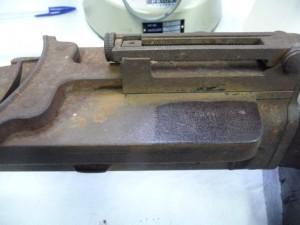
Corrosion was removed from the surfaces using a range of mechanical means without damaging the original surface.
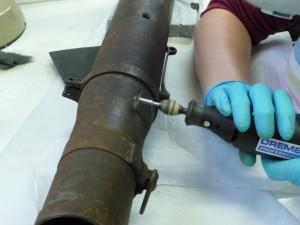
There were remaining areas of corrosion that were difficult to reach with tools, such as inner surfaces and recesses. I treated these areas with tannic acid to passivate the corrosion, rather than leaving them untreated and prone to further corrosion.
The aluminium components were mechanically and chemically cleaned then degreased. I then applied microcrystalline wax to all the metal parts of the gun to provide a protective coating to the surfaces. Following this I chemically cleaned and then waxed the stock.